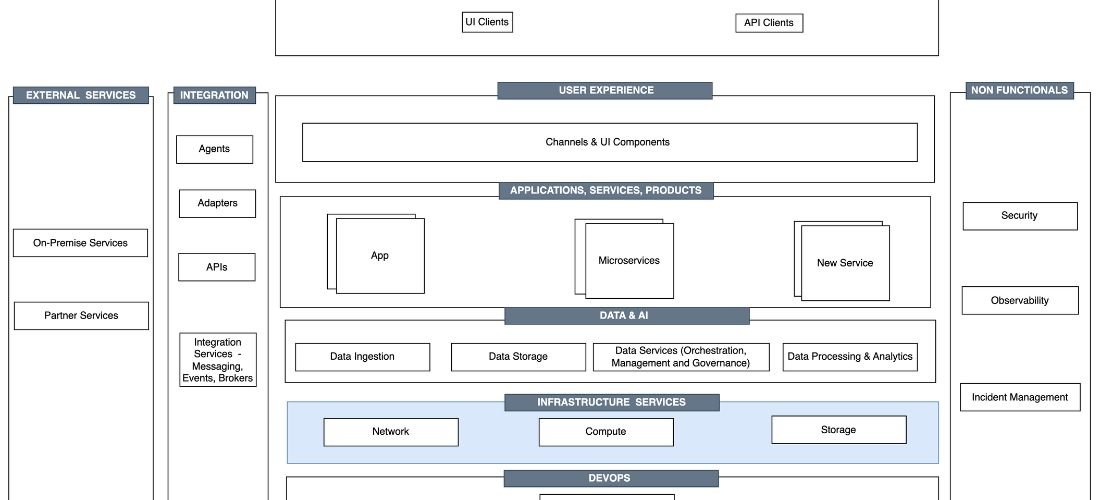Accelerate Innovation by Shifting Left FinOps, Part 3

Are you ready to revolutionize your FinOps processes and supercharge innovation within your organization? In this third installment of our series on Accelerate Innovation by Shifting Left FinOps, Part 3, we dive deep into streamlining FinOps processes for maximum efficiency. Get ready to discover the power of automation, collaboration, and data analytics in optimizing your financial operations for unparalleled success. Let’s unlock the secrets to driving innovation through proactive financial management – let’s dive in!
Accelerate Innovation by Shifting Left FinOps, Part 3
In the dynamic landscape of modern business, staying ahead requires more than just keeping up – it demands innovation. Part 3 of our series on shifting left FinOps explores how streamlining processes can be a game-changer in fueling innovation. By optimizing your financial operations, you pave the way for creativity and growth to flourish.
Automation is a key player in driving efficiency and effectiveness within FinOps. By automating routine tasks and processes, teams can focus their energy on strategic initiatives that push boundaries and foster innovation. Embracing automation empowers organizations to break free from manual constraints and unleash their full potential.
Collaboration lies at the heart of successful FinOps management. When teams work together seamlessly, ideas flow freely, leading to breakthroughs that propel innovation forward. Building a culture of collaboration ensures that every voice is heard and valued in the pursuit of excellence.
Data analytics holds immense power in unlocking insights that drive optimization within FinOps. Harnessing data allows organizations to make informed decisions based on real-time information, enabling proactive strategies that ignite innovation. Leveraging data analytics transforms raw numbers into actionable intelligence for sustained success.
By integrating these principles into your FinOps strategy, you lay the groundwork for accelerated innovation through proactive financial management. Stay tuned as we unravel more secrets to maximizing efficiency and propelling your organization towards groundbreaking achievements!
Read Also: MVP Product Costing $100,000+ Without QA Testing. Is It Possible?
Streamlining FinOps Processes for Innovation
Are you looking to accelerate innovation within your organization? Streamlining FinOps processes could be the answer. By optimizing financial operations, you can free up resources and time for more innovative pursuits.
One way to streamline FinOps processes is by adopting automated tools and technologies. Automation helps reduce manual errors, improves efficiency, and allows teams to focus on strategic initiatives rather than repetitive tasks.
Furthermore, collaboration plays a crucial role in streamlining FinOps processes. When different departments work together seamlessly, it enhances communication, aligns goals, and fosters a culture of innovation across the organization.
Data analytics also plays a significant role in optimizing FinOps processes. By leveraging data insights, organizations can make informed decisions, identify areas for improvement, and drive continuous innovation in financial operations.
In today’s fast-paced business environment, streamlining FinOps processes is essential for staying competitive and driving growth through innovation. By implementing efficient workflows supported by automation tools, fostering collaboration among teams, and harnessing the power of data analytics – organizations can pave the way for accelerated innovation and success.
Implementing Automation in FinOps
Have you ever wondered how automation could revolutionize the way we manage financial operations? Well, implementing automation in FinOps is a game-changer. By automating repetitive tasks like invoice processing and cost allocation, teams can focus on strategic initiatives that drive innovation.
Automation streamlines processes, reduces manual errors, and enhances efficiency. Imagine having software that automatically categorizes expenses or alerts you when budgets are being exceeded – it’s like having a virtual assistant dedicated to optimizing your financial operations.
With automation tools integrated into FinOps processes, teams can make faster decisions based on real-time data. This agility enables businesses to adapt quickly to market changes and capitalize on emerging opportunities without delays caused by manual interventions.
Moreover, automated workflows ensure compliance with financial regulations and internal policies. By reducing human intervention in routine tasks, the risk of non-compliance decreases significantly. This not only saves time but also mitigates potential legal or financial consequences associated with errors.
In essence, implementing automation in FinOps empowers teams to work smarter, not harder. It frees up valuable resources for innovative projects and strategic planning while enhancing accuracy and compliance in financial management processes.
Importance of Collaboration in FinOps
Collaboration plays a pivotal role in the success of FinOps practices within an organization. When finance and operations teams work together seamlessly, it fosters a culture of transparency and accountability. By collaborating effectively, teams can align their goals towards optimizing cloud costs while driving innovation.
In the realm of FinOps, collaboration ensures that all stakeholders are on the same page when it comes to financial management processes. It allows for cross-functional communication and decision-making, leading to more informed choices regarding resource allocation and cost optimization strategies.
Furthermore, collaboration encourages knowledge sharing among team members with diverse skill sets. Finance professionals bring their expertise in budgeting and forecasting, while operations specialists offer insights into cloud utilization patterns. This exchange of information enables a holistic approach to managing cloud costs efficiently.
Moreover, fostering collaboration between different departments cultivates a sense of ownership over cost management initiatives. When employees feel empowered to contribute ideas and solutions, they become more invested in achieving cost savings targets collectively.
By emphasizing collaboration in FinOps practices, organizations can break down silos and create a cohesive environment where innovation thrives. The collective effort leads to enhanced efficiency in cost optimization strategies and paves the way for accelerated business growth through streamlined financial operations.
Read Also: Build a Philosophy Quote Generator with Vector Search and Astra DB (Part 3)
Leveraging Data Analytics for FinOps Optimization
Leveraging data analytics for FinOps optimization is the key to unlocking new levels of efficiency and innovation within organizations. By harnessing the power of data, businesses can gain valuable insights into their financial operations, identify areas for improvement, and make informed decisions that drive growth.
With advanced analytics tools at their disposal, finance teams can analyze large volumes of data in real-time, spot trends and anomalies, forecast future financial outcomes with greater accuracy, and optimize resource allocation. This proactive approach allows companies to stay ahead of market changes, mitigate risks effectively, and seize opportunities for expansion.
In today’s fast-paced business environment where innovation is a critical differentiator between success and stagnation, leveraging data analytics in FinOps is not just a competitive advantage—it’s a necessity. By combining automation with collaboration and data-driven insights, organizations can streamline their financial processes while fostering a culture of continuous improvement that accelerates innovation across all aspects of their operations.



